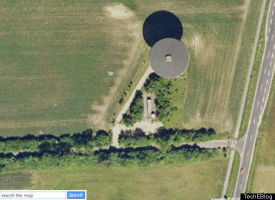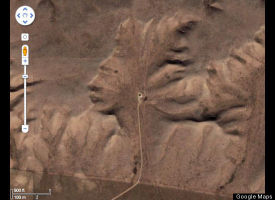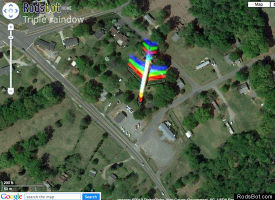Google Earth's 'Atlantis' Disappears After Upgrade
Google has crushed the hopes of Atlantis hunters everywhere by removing from Google Earth an image that had been rumored to be of the lost city.
The image, which was discovered in 2009, was especially compelling for Atlantiophiles, because it was located in one of the areas where the ancient city was thought to have been built, reports The Daily Mail.
Although the web behemoth kept the image up for three years, it has maintained since the beginning that the pattern was caused by an error in shipboard sounding data and not by an ancient city that disappeared into the ocean. Two oceanography experts who wrote a post for Google's official blogpointed out that if the grid did in fact depict Atlantis, some of the city blocks would have been eight miles long.
The change -- and disappearance of "Atlantis" -- is part of joint effort by Google, Scripps Institute of Oceanography, the National Oceanic and Atmospheric Administration (NOAA), the U.S. Navy and others to improve the quality of Google Earth's underwater imaging.
According to a quote from Scripps geophysicist David Sandwell, which was posted on the Scripps website, part of the work was done by college students. Sandwell stated, "UCSD undergraduate students spent the past three years identifying and correcting the blunders as well as adding all the multibeam echosounder data archived at the National Geophysical Data Center in Boulder, Colorado."
The update, announced on Google's blog, was timed to coincide with the three-year anniversary of the launch of Google Earth's 3D ocean. The major goal of the update was clean up mistakes in the oceanic topography images and make them more accurate. According to the Google Lat Long Blog,after the changes, 15 percent of the ocean floor (up from 10 percent) is now visible at a resolution of 1km. Google Earth's oceanic maps now match those used by researchers, which makes them much more useful as a scientific tool. (Read more about the changes here)
The new data was collected by American and European satellites as well as shipboard sounding surveys from over 40 countries. According to a video posted on YouTube, the five locations of major improvement include the Rosemary Bank seamount off the west coast of Ireland; an area south of Cypress, where the Eurasian and Arabian plates meet; the Britannia and Brisbane table mounts south of the Great Barrier Reef, the Marianas Trench near the island of Guam, and of course the place off the coast of Morocco called the Madeira Abyssal Plane where "Atlantis" was found. See what the "Atlantis" location actually looks like here.
According to Global Adventures, LLC, the next major upgrade to Google Earth, which launched in 2005, is expected to have twice the accuracy of the current maps and will likely happen sometime this year.
Fake Atlantis isn't the only strange image recorded on Google earth; read our article on the 36 weirdest Earth images, or take a look at the slideshow below. Google Maps finds some pretty weird things too. Check out horse boy, alien boy and the three-legged man in our slideshow of craziest Google Street View images.



















Comments
Post a Comment